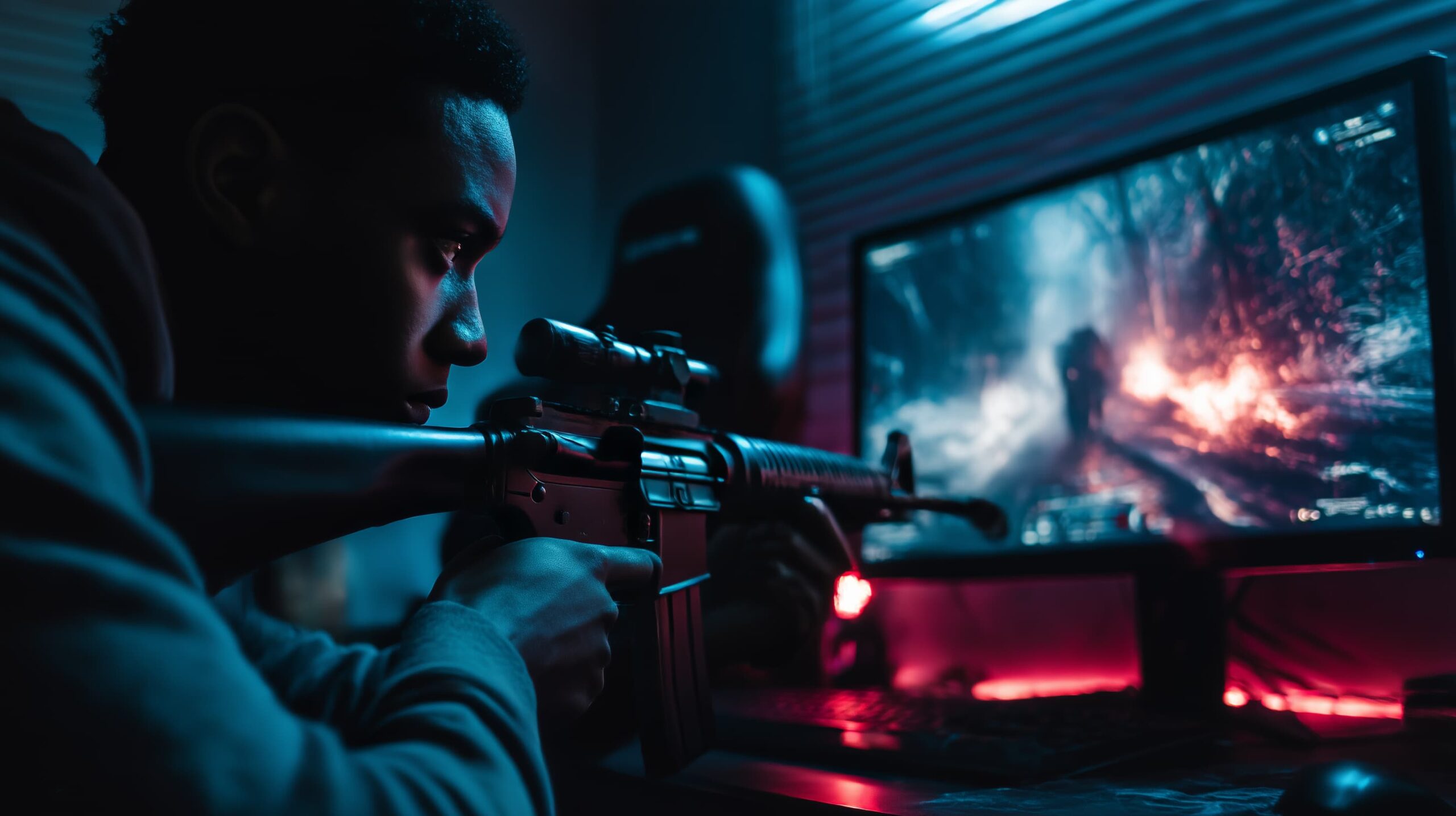
When we think about storytelling in video games, we often focus on characters, dialogue, plot twists, or worldbuilding. Yet one of the most powerful narrative tools in any game is something most players rarely think about consciously: the camera. In video games, the camera is not just a technical device or visual necessity—it is a narrative perspective, an emotional guide, and often, a silent narrator.
How a game positions its camera—whether behind the player, above them, or through their eyes—shapes not only how the player sees the world but how they experience the story emotionally, psychologically, and thematically. In cinema, directors control the lens. In games, developers do—but they must also account for the player’s freedom. This tension between control and agency makes the use of perspective in games uniquely powerful.
Let’s explore how different types of in-game cameras influence narrative, shape character relationships, and even define the identity of the player within a virtual world.
First-Person Perspective: Becoming the Protagonist
In first-person games, the camera sits directly behind the character’s eyes. What they see, you see. This perspective offers the most intimate form of storytelling, collapsing the boundary between the player and the protagonist. You don’t just witness events—you inhabit them.
Games like Half-Life, Bioshock, and Firewatch use first-person not just for immersion, but for emotional resonance. When the camera wobbles during an explosion or focuses on shaking hands holding a gun, it communicates fear or uncertainty. The absence of a visible protagonist reinforces the idea that you are the central figure, forging a personal connection to the story’s stakes.
However, first-person has limitations. It restricts situational awareness and emotional visibility. You can’t see your character’s face, posture, or reactions unless the game uses reflections or other tricks. Developers must work harder to communicate emotional nuance through voice acting, sound design, and environmental context.
Third-Person Perspective: Observing the Hero
In third-person games, the camera usually floats behind or above the protagonist. This distance creates a different kind of narrative experience—less personal, but more cinematic. The player becomes an observer and guide rather than the hero themselves.
This point of view allows the game to convey more about the character—how they move, dress, or react. In The Last of Us, watching Joel and Ellie from a third-person perspective enables players to see their evolving relationship not just through dialogue, but through body language and positioning. In Tomb Raider, Lara Croft’s physical struggle and transformation are partly told through how the camera follows her injuries, hesitations, and evolution.
Third-person is also flexible. It allows for dramatic camera sweeps, over-the-shoulder dialogue shots, and choreographed action sequences. The player sees both the character and the world simultaneously, often resulting in a deeper connection to both.
Fixed Camera Angles: Curating Emotion
Once more common in early 3D games, fixed camera angles—where the camera is locked to a specific position—are still used for dramatic effect. Though restrictive, these angles allow developers to control the frame completely, just like a film director. They can highlight architecture, obscure danger, or create tension through what’s just off-screen.
Survival horror games like Resident Evil and Silent Hill are famous for using fixed perspectives to enhance dread. A camera placed high in the corner of a room can make a player feel small or watched. A low-angle view of a hallway may increase a sense of isolation or claustrophobia.
Though less common today, fixed angles can be incredibly expressive when used sparingly, especially in narrative-driven or art-focused titles.
Isometric and Top-Down Views: Abstracting the World
Games with isometric or top-down views position the camera far above the player, often at a slight angle. This perspective creates emotional and psychological distance. The player doesn’t feel inside the world but rather looking down upon it.
This detachment can serve narrative purposes. In strategy or simulation games, the god-like view reinforces themes of control and responsibility. In story-driven isometric RPGs like Disco Elysium, the distance allows for a focus on dialogue and systems rather than visceral immersion.
Interestingly, this perspective can sometimes make emotional beats hit harder—not because they feel realistic, but because they feel inevitable. Watching a small character suffer or change from afar can evoke empathy through helplessness, not identification.
Dynamic Camera Systems: Following Emotion
Some games use dynamic or reactive cameras that shift depending on context. The camera may zoom in during quiet scenes, shake during explosions, or change angles during emotionally charged conversations. These shifts can be subtle or dramatic but always serve the story.
For example, God of War (2018) famously uses a “one-shot” camera that never cuts. The entire game is told through a single continuous perspective that follows Kratos and Atreus from behind. This decision enhances the emotional intimacy of their journey and creates a feeling of uninterrupted presence.
In contrast, a game like Uncharted uses cinematic camera transitions to deliver a more movie-like experience, blending gameplay and cutscenes seamlessly.
Player-Controlled Cameras: Agency and Story Discovery
Many modern games give players some degree of control over the camera—allowing them to zoom, rotate, or switch views. This opens the door to narrative discovery. Players who look around may find hidden details, visual foreshadowing, or story clues embedded in the environment.
In Red Dead Redemption 2, for example, the player can choose to ride in third-person or switch to first-person for immersion. They can stop to look at the mountains or follow a trail of smoke on the horizon. The camera becomes not just a lens, but a tool of curiosity.
Giving the player control also allows for personal storytelling. Screenshots, player-made videos, and photo modes have turned camera manipulation into a form of creative expression—where players tell their own story through framing and timing.
Conclusion
The camera in video games is more than a mechanical necessity. It’s a narrative device, a character, and a bridge between the player and the story. Whether placing us in the protagonist’s shoes, allowing us to observe from above, or guiding us through curated scenes, the point of view shapes how we feel, what we notice, and who we become in the game world.
As technology evolves and games continue to experiment with storytelling, the role of the camera will only become more sophisticated. Developers are no longer just coding views—they’re crafting perspectives. And through those perspectives, players aren’t just watching stories unfold—they’re living them.
